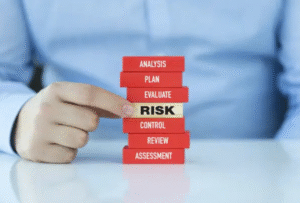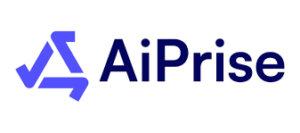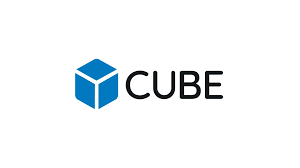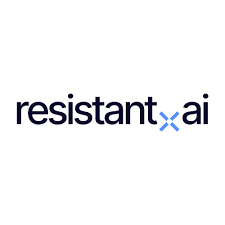The Compliance Officer’s Toolkit: Building Cybersecurity into Corporate Governance
When attackers compromised over 165 Snowflake customer environments between April and June 2024, the breach exposed a governance failure as much as a security one, highlighting serious weaknesses in corporate governance. AT&T paid $370,000 in ransom after the incident compromised call records for nearly all its US mobile customers. Ticketmaster, Santander Bank, Advance Auto Parts and Neiman Marcus saw sensitive records belonging to over 500 million individuals exfiltrated.
The root cause was prosaic: stolen credentials harvested from infostealer malware dating back to 2020, used against accounts that lacked multi-factor authentication. Mandiant’s investigation found every incident traced back to compromised customer credentials, not a breach of Snowflake’s own systems. In other words, basic hygiene failures, extended over years, culminated in what many consider 2024’s largest criminal cyber operation against commercial enterprises.
For compliance functions, the Snowflake incident crystallised an uncomfortable reality: cyber risk governance cannot be delegated to IT security teams alone. Post-breach analyses confirm that multi-factor authentication would have blocked 98 per cent of the credential-based attacks. Yet MFA remained optional at Snowflake until June 2024, after the damage was done. Where were the governance controls that should have mandated such basic protections? Where were the compliance officers asking whether vendor security standards met organisational risk tolerances?
The answer, increasingly, is that compliance teams lacked the practical tools to ask those questions effectively, let alone enforce the answers. As cyber threats have industrialised and regulatory expectations have intensified, compliance officers are discovering that traditional audit and review approaches no longer suffice. What’s required instead is a working command of technologies that make cybersecurity governable: platforms that translate technical vulnerabilities into board-level risk metrics, systems that continuously monitor vendor security posture, and frameworks that integrate cyber controls into broader compliance programmes.
Translating Technical Risk into Financial Terms
Compliance officers have long struggled with a translation problem. Security teams identify vulnerabilities, but boards want to understand financial exposure. This gap leaves compliance functions unable to prioritise remediation or justify security investments in business terms.
Cyber risk quantification platforms address this by converting technical findings into expected financial losses. Tools such as RiskLens apply methodologies like the Factor Analysis of Information Risk (FAIR) framework to model scenarios. A compliance officer can now determine not merely that unpatched systems exist, but that exposure to ransomware carries, say, an annualised loss expectancy of £2.3m at the 90th percentile.
The value lies in enabling risk-based prioritisation. When resources are finite, as they always are, quantification allows compliance teams to advocate for remediation based on defensible loss estimates rather than technical severity scores that executives struggle to contextualise. It transforms cyber risk from an IT concern into a capital allocation decision, supporting stronger corporate governance.
These platforms typically combine threat intelligence feeds, asset inventories and historical breach data. The compliance function’s contribution is ensuring models reflect actual organisational risk appetite and tolerance thresholds. This is governance work, not technical work, but it requires sufficient fluency to ask whether the quantification methodology is sound and whether the inputs are comprehensive.
Making Third-Party Risk Continuous Rather Than Periodic
Mandiant identified 165 potentially exposed Snowflake customer organisations, but many learned of their exposure only after threat actors advertised stolen data on cybercrime forums. Traditional vendor risk management, questionnaires completed during onboarding or perhaps an annual SOC 2 review, proved woefully inadequate for detecting deteriorating security posture in real time.
Third-party risk management platforms such as BitSight and SecurityScorecard address this by continuously monitoring vendors’ external security indicators. BitSight and SecurityScorecard are global leaders in cyber risk intelligence, specialising in third-party risk monitoring and vulnerability detection. These systems scan for exposed databases, misconfigured cloud storage, leaked credentials and other observable security lapses, providing compliance teams with ongoing visibility rather than point-in-time assurance.
The practical impact can be substantial. A manufacturing group that implemented continuous vendor monitoring discovered that several critical suppliers had experienced unreported breaches, triggering reviews that led to three vendor relationship terminations based on deteriorating security ratings. The alternative, discovering vendor compromises only after they cascade into the organisation’s own environment, is what happened to Snowflake’s customers.
Yet adoption faces resistance. Continuous monitoring represents a significant shift from traditional vendor management, requiring organisations to define what constitutes an acceptable security rating, establish escalation procedures and ensure contractual rights to act on concerning findings. The compliance function’s role is precisely this: defining criteria for vendor acceptance, building workflows that translate monitoring data into decisions and ensuring vendor security requirements flow through contracts, which is key to effective corporate governance.
Integration with existing systems matters. These platforms increasingly connect with governance, risk and compliance (GRC) tools, allowing vendor risk scores to feed into broader risk registers and compliance dashboards. Without integration, continuous monitoring becomes another isolated data stream rather than an input to enterprise risk management.
Creating Audit Trails That Support Real-Time Decisions
Compliance has always required demonstrating what was done and when. In cybersecurity, this means comprehensive, tamper-proof logs of security events and responses. Security Information and Event Management (SIEM) systems, platforms such as Splunk, IBM QRadar and Microsoft Sentinel, serve this dual purpose, enabling real-time threat detection while creating the audit trail necessary for regulatory compliance.
The European Union’s NIS2 directive, which requires organisations to report significant cyber incidents within 24 hours, exemplifies why SIEMs have become compliance infrastructure. Many compliance teams discovered they lacked systems to even identify when a reportable incident had occurred, let alone document the timeline of detection and response. Properly configured SIEMs solve this by automatically flagging events that meet reporting thresholds.
The compliance function’s responsibility is defining what constitutes a reportable event, ensuring the SIEM detects these events and establishing workflows for escalation and regulatory notification. This requires understanding what the SIEM can detect, which logs must be collected and how long data must be retained. These are technical considerations, but fundamentally governance questions about meeting regulatory obligations and managing legal risk, strengthening corporate governance.
Implementation challenges are considerable. SIEMs generate enormous volumes of alerts, many false positives. Without careful tuning and clear escalation criteria, they become noise generators rather than early warning systems. The discipline of defining which events matter, and to whom, is where compliance expertise proves essential.
Integrating Cyber Controls into Enterprise Risk Frameworks
Perhaps the most critical tool for compliance officers receives less attention than specialised security technologies: integrated GRC platforms such as ServiceNow, MetricStream and LogicGate. MetricStream has been recognised as a Leader in the IDC MarketScape Worldwide Governance, Risk, and Compliance Software 2025 Vendor Assessment.
These platforms allow organisations to map cybersecurity controls to regulatory requirements, track implementation and testing, manage exceptions and remediation plans, and generate reports for regulators and boards. The power lies in integration. Cybersecurity becomes part of the organisation’s overall control environment rather than a separate compliance domain, supporting robust corporate governance.
A compliance officer can see, in a single view, that the organisation is 85 per cent compliant with NIS2 requirements, that the remaining 15 per cent involves access controls in a specific department and that remediation is scheduled for next quarter. When regulators ask about response to a specific vulnerability, the system can immediately produce the risk assessment, remediation plan, approval chain and evidence of implementation.
Without such systems, compliance teams resort to spreadsheets and email trails, a recipe for gaps and inconsistencies. When a European healthcare provider faced regulatory enquiry about a specific vulnerability, its GRC platform allowed immediate production of complete documentation. Without it, as the compliance director noted, they would have been “scrambling through emails and spreadsheets” whilst regulators waited.
The challenge is that GRC platforms require significant organisational discipline. They work only when controls are actually documented, when exceptions follow defined approval processes and when teams update status regularly. Technology cannot compensate for poor process discipline, but it can make good processes scalable.
Addressing the Human Element Through Behavioural Data
Technology cannot secure organisations alone. The Snowflake attacks succeeded partly because threat actors deployed infostealer malware, in many cases bundled with pirated software, to harvest credentials from contractor systems used for both work and personal activities. The failure was human behaviour as much as technical controls.
Modern security awareness platforms such as KnowBe4 and Proofpoint move beyond annual training modules towards continuous, contextual education. They simulate phishing attacks to test employee behaviour, deliver micro-learning in the flow of work and provide compliance teams with data about where vulnerabilities concentrate.
The value is specificity. One organisation discovered its finance team clicked simulated phishing emails at three times the rate of other departments. Investigation revealed this wasn’t a training failure. Finance regularly receives legitimate urgent payment requests, making them desensitised to requests for rapid action. The solution wasn’t more training but redesigning processes to reduce ambiguity about authorisation procedures.
For compliance functions, these platforms provide measurable indicators of security culture which helps with corporate governance. When regulators ask how the organisation ensures workforce awareness of security obligations, compliance can point to testing results, completion rates and behavioural improvements over time. The alternative, attestations that employees completed training, provides little assurance about actual behaviour change.
The risk is using these tools punitively. Employees who click simulated phishing emails need coaching, not discipline, or they’ll simply stop reporting suspicious messages. Compliance’s role is ensuring these systems support a learning culture rather than a blame culture which enables better corporate governance.
Making Technology Serve Governance
The thread connecting these tools is that they make cybersecurity governable. Risk quantification translates technical vulnerabilities into the financial language boards understand. Continuous vendor monitoring extends oversight beyond organisational boundaries. SIEMs create audit trails that support both real-time response and regulatory compliance. GRC platforms integrate cyber controls into enterprise risk management. Training platforms provide behavioural data that measures security culture.
None replaces the need for skilled security professionals who understand technical threats. But they enable compliance functions to fulfil their core mandate: ensuring the organisation operates within acceptable risk parameters. When compliance teams lack tools to measure cyber risk, monitor third-party exposures or track control implementation, they cannot effectively govern these risks regardless of how many policies they write.
The Snowflake breach demonstrated the cost of this governance gap. The cluster of breaches ultimately affected over 500 million consumers and employees, sparking multiple lawsuits and regulatory investigations. Had compliance teams possessed better tools to enforce MFA requirements, monitor vendor security posture and quantify the financial risk of credential exposure, many of these incidents might have been prevented.
The question facing compliance functions is whether they will invest in these capabilities before the next major incident or explain afterwards why they lacked the tools to prevent it. The technology exists. The regulatory pressure is mounting. What remains is for compliance officers to claim their role in making cybersecurity governable, and for organisations to fund that transformation.





